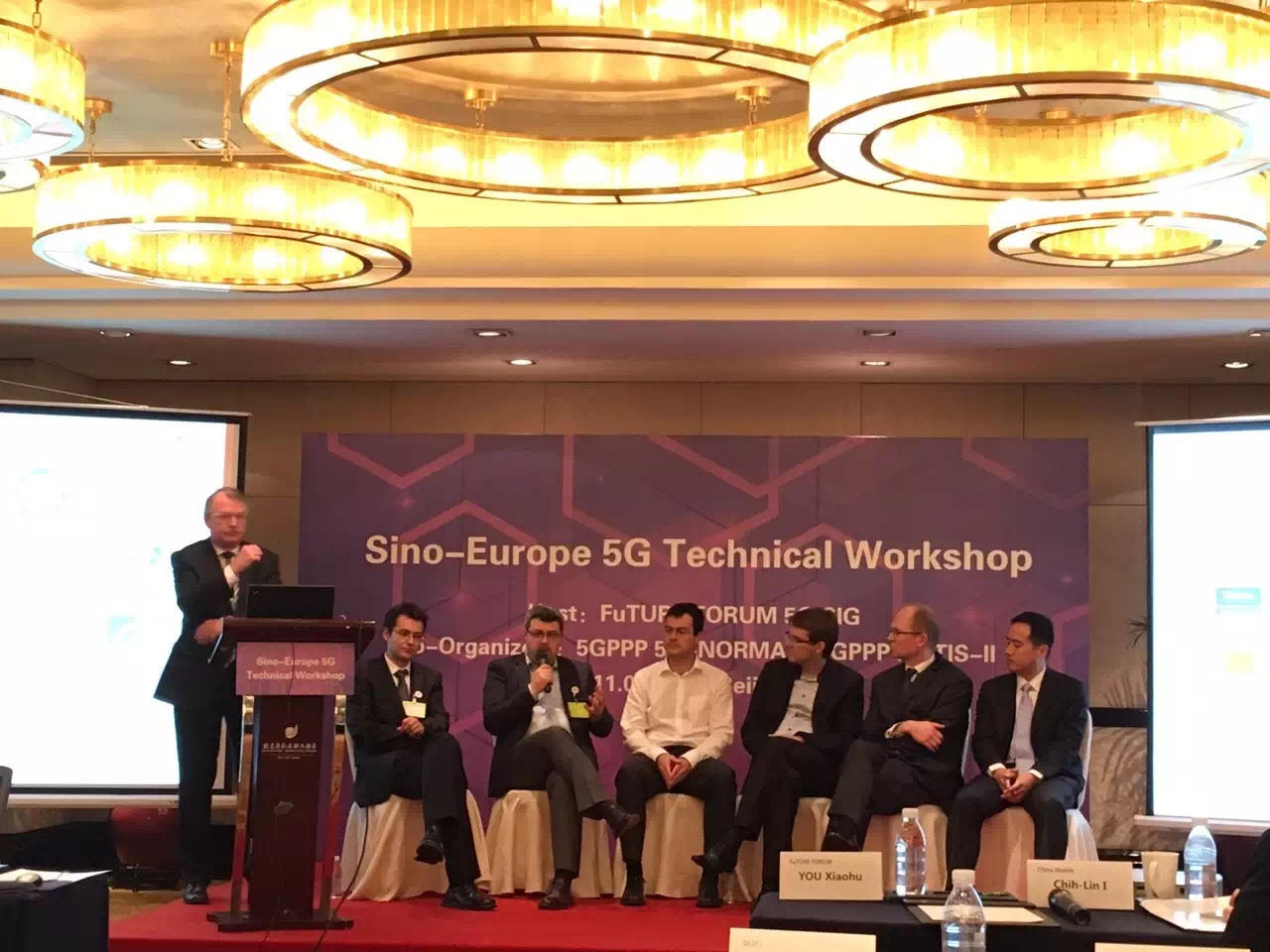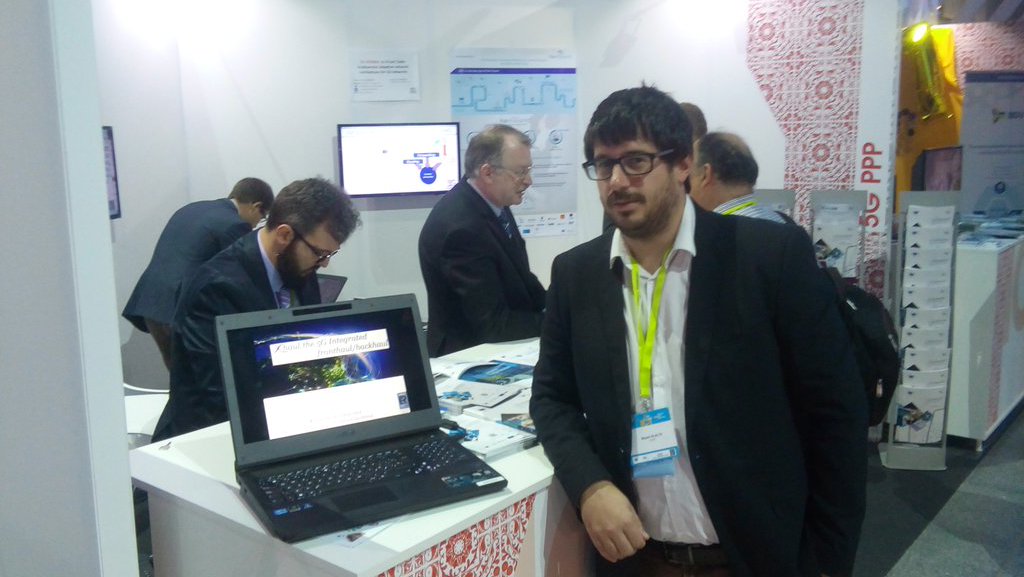European industrial and academic partners join to develop the integrated fronthaul and backhaul solution for 5G Networks
• The 5G-Crosshaul project, part of the European H2020 5G Public-Private Partnership (5G PPP) Infrastructure, will define and develop the next generation of integrated fronthaul and backhaul networks that will respond to the needs of the future 5G communications system.
• The 5G-Crosshaul consortium comprises 21 partners including leading telecom industry vendors, operators, IT companies, small and medium-sized enterprises and academic institutions.
Madrid, Spain – 1 July 2015
Telecom industry vendors, operators, IT companies, small and medium-sized enterprises and academia in Europe and Asia (Taiwan) are working together to develop an adaptive, sharable, cost-efficient solution integrating the fronthaul and backhaul segments of the future 5G transport network. This solution aims at flexibly interconnecting distributed 5G radio access and core network functions, hosted on in-network cloud infrastructures. It will greatly simplify and accelerate network operations, reduce the network cost, and enable system-wide orchestration and optimization for enhanced Quality of Service (QoS) and energy saving, as well as the development of network-aware applications. The work is planned for a period of 30 months, starting on the 1st of July 2015.
5G networks are challenged with the need to provide significantly high data rates (tens of Gbps) with very low latency (few ms). These challenging requirements come at a time of decreasing average revenue per user for telecom operators, which clearly raises the need for solutions that can drive down the operators’ total cost of ownership to a profitable level. Current approaches employing C-RAN (Centralized Radio Access Network), where the base station functionality is statically split between radio heads and baseband processing units connected together via a fronthaul network, come at the expense of increased transport network heterogeneity, complexity and limited flexibility to optimize for different Key Performance Indicators (e.g. capacity, latency, energy) in different network and service contexts. 5G-Crosshaul, defined as the common flexible transport solution for future 5G networks, aims at integrating the fronthaul and backhaul networks with all their wire and wireless technologies in a common packet based transport network under an SDN-based (software defined networks) and NFV-enabled (network functions virtualization) common control. This solution will hence enable a flexible and software-defined reconfiguration of all networking elements in a multi-tenant and service-oriented unified management framework.
The consortium’s envisioned novel 5G-Crosshaul architecture will enable an unprecedented level of flexibility and dynamicity at a reduced cost, allowing operators to reconfigure and share the network in a cost-effective and time-efficient manner. 5G-Crosshaul will consider a mix of different heterogeneous (both wire and wireless, existing (legacy) and novel) physical and link technologies to implement a unified fronthaul and backhaul networking infrastructure.
The technical approach is based on two novel building blocks: i) a control infrastructure using a unified, abstract network model for control plane integration (Crosshaul Control Infrastructure, XCI) and ii) a unified data plane encompassing innovative high-capacity transmission technologies and novel deterministic-latency switch architectures (based on Crosshaul Packet Forwarding Element, XFE), seamlessly interconnecting different heterogeneous transport technologies, and employing a single, versatile frame format.
The 5G-Crosshaul infrastructure will be driven by novel NFV-enabled orchestration engines for intelligent context-aware allocation of the network and IT resources providing a great flexibility of dynamic distribution and centralization of network functions, as well as new techniques for end-to-end monitoring, prediction and enforcement of QoS parameters. This will open the door for new services to run effectively on top of 5G-Crosshaul, such as multi-tenancy, energy saving, capacity provisioning and reconfiguration, media distribution, and ubiquitous cloud services.
The 5G-Crosshaul solution will be demonstrated in a large-scale real-world environment in Berlin. For this purpose, the 5G Berlin Testbed, consisting of Open5Gaccess, Open5Gphotonics and Open5Gcore, will serve as a platform for early evaluation of 4G and 5G technologies with the focus on Xhaul concepts and their investigation in a realistic end-to-end network environment. In addition, field trials will be conducted to demonstrate the 5G-Crosshaul mobility support for the high-speed train application providing on-train high-capacity hotspots on one of Taiwan’s high-speed rail tracks.
Industry players included in the consortium
Vendors and IT: NEC (Technical Management), Ericsson, Nokia Networks, ATOS and Interdigital Europe.
Operators: Telecom Italia, Orange and Telefonica.
Small and Medium-sized Enterprises: CoreNetwork Dynamics, Telnet, EBlink, Visiona IP and Nextworks.
Academia: University Carlos III of Madrid (Project Coordinator), Fraunhoffer Heinrich Hertz Institute, CTTC, CREATE-NET, Politecnico di Torino, Lunds University and ITRI.
For more information please contact:
Project Coordinator:
Arturo Azcorra
azcorra@it.uc3m.es
Technical Manager:
Xavier Costa
xavier.costa@neclab.eu
Project Web Page:
www.5g-crosshaul.eu




